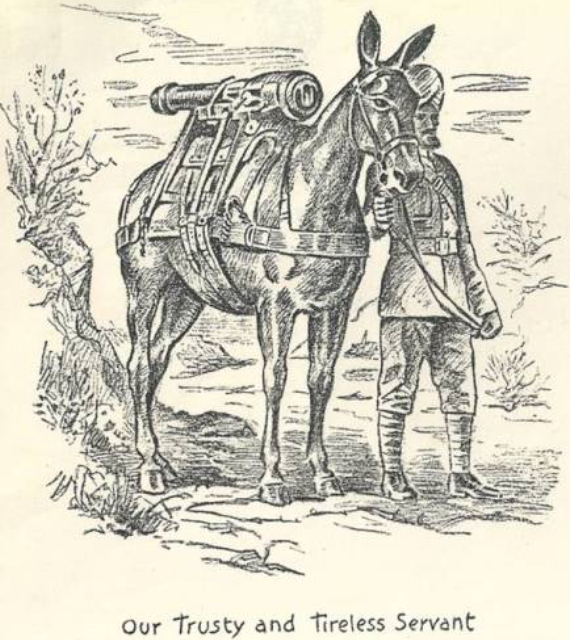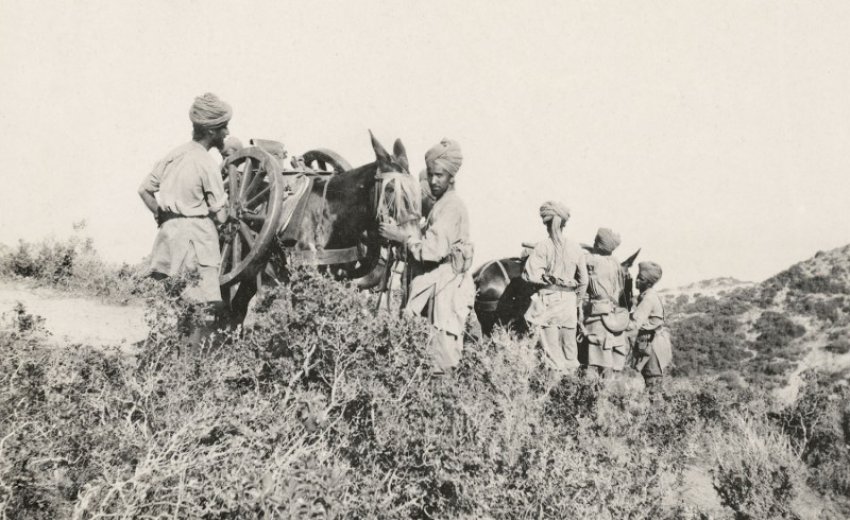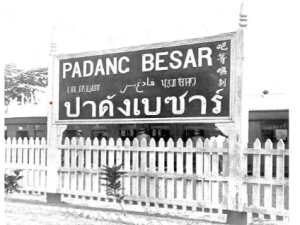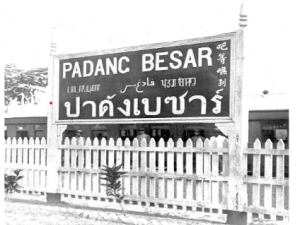Co-written by Harprabhjeet Singh Bedi
Remembered His Indian Mule Corps Pals
"In loving memory of my 'Johnny' pals in the Indian Mule Corps, who kept the rations and munitions up to us at Anzac. - Sgt. 'Silver.' "Friday 25th April 1941.
This note was tied to a little wreath placed on the State War Memorial. A similar wreath has been there every year since the last war. The man who remembers as Mr. M. D. Kirwan, of Adelaide, an Anzac with the 16th Battalion, who acted as interpreter in Hindustani with the Indian Mule Transport Corps when the Indians were called up to do all the transporting of supplies from the beach to the front lines on Gallipoli.
Simpson and his donkey have become the most famous figures of the Gallipoli campaign. They are immortalised in statues at the Australian War Memorial in Canberra and Melbourne's Shrine of Remembrance, and his story is told in children's books and school history classes. Most Australians know the story of Simpson and his donkey, but it's not well known that Simpson lived in a camp with Indian mountain gunners at Gallipoli.
The role of Indian soldiers in Gallipoli needs a proper acknowledgement. Let it be on memorials or at a governmental level. On Anzac day commemoration there is an abundance of information in the media. But we still lack to educate people about the martial contribution of other communities. It is important that we remember them, the fallen, who fought for this land so that we might remain a free country.
"Many men defended their country and gave their lives to protect their country, but there is nothing more heroic and courageous than the actions by the Indian Mule Corps".
The Sikhs for the most part man the mountain batteries and the mule teams, and I reckon every one of the mule drivers deserves a V.C. They used to have to drive along the beach at Anzac to Wilson's pier, pelted with shrapnel all the time. They used to get wounded badly, but no matter how badly their first concern was the Mule.- (Lance-Corporal Neeld, Australian Convalescent Hospital, Al Hayat, Helouan)
The Mule Corps comprised the largest contingent of Indian troops in Gallipoli. Mules formed part of the supply and transport section of armies and were particularly popular with expeditionary forces which had to travel over rougher terrain. The lack of roads on the peninsula rendered motor transport useless. The transport difficulty was largely resolved by the allotment of an Indian mule transport train from France consisting of more than 4000 mules and 2000 carts.
Food, water, ammunition, entrenching tools, signalling, the wounded and medical equipment are carried on the mules, which accompany the troops wherever they may be sent. Uncoupled from their carts, the mules were also used in trains to take supplies up into hills to brigade dumps closer to the front line trenches.
The Indians did great work with the mules in carrying ammunition into the firing line. On one occasion laden mule in charge of an Indian was shot down, but the Indian calmly unstrapped the two cases of ammunition (weighing about 200 Ib) and himself dragged them one after another through the fire zone and over the brow of hill to one of our trenches. Throughout the whole operation he was as cool as cucumber.- (Major Loach.1st Canterbury Infantry).
"The Mule Corps basically kept forces alive for eight months of the campaign."
"I don't know what we would have done without the mules in Anzac. I reckon we would have starved. You should have seen some of the tracks they had to climb and talk about slippery, every bit of food, ammunition; clothing and nearly all our water had to be carried by the mule teams up to the trenches. It was a task I can tell you and it had practically all to be done at night time for the Turks could see them in daylight. The Indians were responsible for all this work and deserve a heap of praise, There were a good few of them chaps killed at Anzac".- ( Private Archie Barwick, 1st Battalion, AIF )
Mules are loyal animals. In the army, there are several stories of valour, loyalty and courage specifically involving mules. One story goes that a mule was captured by Pakistani troops during one of the wars.
The enemy troops probably made the captured mule work for them, but not for too long.
The patriotic mule escaped from enemy hands and returned to its parent unit bringing along a load of rations for its own welcome back party!

'There were detailed analyses by many army men to understand the reasons for the mule's daring escape. Humans would escape and return to their country not only for patriotism but also to be back with their loved ones. But these army mules don't have family, so why did they return? It had to be loyalty.'- D K Havanoor
Colonel A.C.Ferguson relates... Narain Singh no.667, served as a Mule Driver in the 21st (Kohat) Mountain Battery (Frontier Force).
.....The only other point worth mentioning before the Suvla Push is the communications. Owing to losses among signallers, and the battery being split up into three bits, each with a distant O.P., we were soon reduced to one signaller per phone who was on duty day and night, always sleeping with his instrument in his ear. The headquarters phone was run by the Mess Orderly, Pyara Singh, in addition to his other duties. We had one linesman only who managed to keep alive during the whole war in some wonderful way. He was always out repairing lines in dangerous places, and two or three times brought back chits from Australian Officers to say they had seen him repairing lines under heavy fire. His name was Narain Singh and he got an I.D.S.M...
Major H.M. Alexander, the commander of the Indian Mule Transport Unit, noted that the ANZACs got on well with the Indians (who were Sikhs) and treated them well. Many accounts of Gallipoli remember the Indian Ambulance Brigade and the Indian Mule Transport. "The Anzacs called every Indian 'Johnny' and treated them like a brother, with the consequences that the Indians liked them even more.
While the stamps, the medals, and the currency have all helped immortalise Simpson and his donkey's name, perhaps after reading to a note written by Sergeant Silver, the commemoration that most befitted about the Indian Soldiers deserve is a due recognition.
Resources:-
-
Gallipoli 1915 by Richard Reid
-
The Indian Army at Gallipoli 1915 United Service Institution of India Centre for Armed Forces –Sqn. Ldr. Sardar Rana TS Chhina ji (Retd) MBE.
-
Arms and the mule, The Times of India by D. K. Havanoor| Feb 20, 2012.
-
London Gazette : 9th March 1917 https://www.thegazette.co.uk/London/issue/29981/supplement/2489
-
Christopher Trevelyan @King Emperor.com
-
Gallipoli Diaries
-
Photo Courtesy of Australian War Memorial
-
The History of the Indian Mountain Artillery by Brigadier - General C.A.L. Graham, D.S.O., O.B.E., D.L.,p.s.c., Aldershot: Gale & Polden Ltd, 1957)





